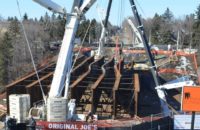Like the national debt, dollar amounts attributed to fraud and corruption are staggering. According to the 2010 “Report to the Nations on Occupational Fraud and Abuse” by the Association of Certified Fraud Examiners (ACFE), based on a survey of its members, global fraud loss is estimated at more than $2.9 trillion annually.
While responses to such excess may include incredulity and outrage, the best response is one of action—namely, fraud prevention at the local level. What should a construction business executive look for when it comes to such an enormous problem? Plenty, it turns out.
Facts about fraud cited in the 2010 report include the following survey results from responding members:• Organizations lose an average of 5% in annual revenue to fraud.
• Misappropriation schemes are the most common form of fraud.
• Occupational fraud is most likely to be detected by tips, a finding that has been consistent since the ACFE began tracking data in 2002.
• Small organizations are more likely to be victimized by fraud.
• Individuals at higher levels of an organization cause the most harm.
• Executive-level fraud takes longer to detect.
• A fraud may last an average of 18 months before being detected.
• Eighty-five percent of perpetrators are not associated with known prior offenses.
• The vast amount of fraud is committed by individuals in accounting, operations, sales, executive management, customer service or purchasing.
Construction-Specific Fraud
Difficult economic times often provide a backdrop for illegal activity. The downturn in the economy affects many industries and seems to have a significant impact on the construction industry. It is important for construction executives to carefully consider the possible sources of fraud.
The construction industry is especially susceptible to fraud because of the complexity of project finances, multi-tiered entities, subcontracting, large amounts of public and private funding with complicated documentation, expensive equipment, and the large number, variety and cost of materials —among other opportunities for illegal activity.


Post a comment to this article
Report Abusive Comment